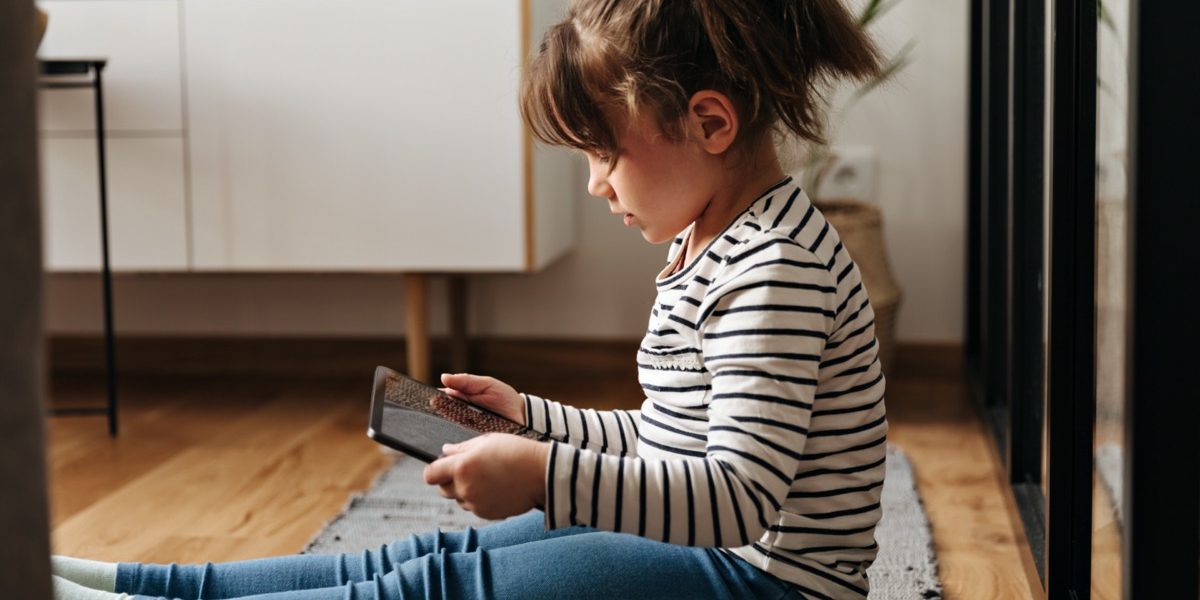The Importance of Location Privacy for Parents
Location privacy is a crucial aspect for parents in today’s digital age. With the increasing use of GPS tracking technology, it has become easier for parents to ensure the safety and well-being of their children. By being aware of their child’s location at all times, parents can have peace of mind knowing that they are nearby or if there is any cause for concern.
Understanding how GPS tracking works is essential for parents who want to utilize this technology effectively. GPS tracking devices use satellites to pinpoint an individual’s exact location on Earth. This information can then be accessed through various apps or software platforms, allowing parents to track their child’s movements in real-time.
The benefits of using GPS tracking go beyond just knowing where your child is at any given moment. It also enables parents to set up geofences, which are virtual boundaries around specific areas such as schools or parks. If a child enters or leaves these designated areas, an alert will be sent to the parent’s device, providing an added layer of security and ensuring that children stay within safe zones.
By understanding the importance of location privacy and utilizing GPS tracking technology responsibly, parents can strike a balance between keeping their children safe and respecting their privacy. It is crucial to have open conversations with children about why monitoring their location may be necessary and reassure them that it is done out of love and concern rather than invasive surveillance. Ultimately, by prioritizing both safety and privacy, parents can navigate the challenges posed by modern parenting in a digital world effectively.
Understanding GPS Tracking Technology
GPS tracking technology is a powerful tool that has revolutionized the way parents can monitor their children’s whereabouts. By utilizing satellites and GPS receivers, this technology enables accurate and real-time tracking of a person’s location. It works by triangulating signals from multiple satellites to determine the exact coordinates of the device being tracked.
One key aspect of GPS tracking technology is its ability to provide precise location information. Parents can track their child’s movements with great accuracy, whether they are at school, at a friend’s house, or in an unfamiliar neighborhood. This level of detail allows parents to have peace of mind knowing where their children are at all times.
Another important feature of GPS tracking technology is its ability to provide real-time updates. Parents can access the location data through various devices such as smartphones or computers, allowing them to instantly see where their child is located. This feature proves especially useful in emergency situations when immediate action may be required.
Furthermore, GPS tracking technology offers additional functionalities beyond just locating a child’s position. Some apps come equipped with geofencing capabilities that allow parents to set up virtual boundaries around specific areas such as schools or parks. If the child crosses these boundaries, parents receive instant notifications on their devices. This added layer of security ensures that parents are promptly alerted if their child goes somewhere they shouldn’t be.
By understanding how GPS tracking technology works and its various features, parents can make informed decisions about implementing it for ensuring the safety and well-being of their children without compromising privacy concerns
How GPS Tracking Can Help Parents Ensure Safety
GPS tracking technology can be a valuable tool for parents to ensure the safety of their children. By utilizing GPS tracking devices or apps, parents are able to keep track of their child’s whereabouts in real-time. This allows them to have peace of mind knowing where their child is at all times and ensuring they are safe.
One way GPS tracking can help parents ensure safety is by providing them with instant alerts if their child goes outside a designated area. Parents can set up geofences, which are virtual boundaries on a map, and receive notifications if their child enters or exits these boundaries. This feature is particularly useful in crowded places or unfamiliar neighborhoods where it may be easy for a child to get lost or wander off.
Furthermore, GPS tracking can aid in locating a missing child quickly. In the unfortunate event that a child goes missing, having access to real-time location information through GPS tracking can significantly increase the chances of finding them swiftly. Parents can share this information with law enforcement agencies and other relevant parties, enabling an immediate search effort.
Overall, GPS tracking technology provides an added layer of security for parents when it comes to ensuring the safety of their children. With its ability to track locations in real-time and provide instant alerts, it offers peace of mind while allowing parents to respond promptly in case any concerns arise regarding their child’s well-being.
Potential Risks and Concerns with GPS Tracking
One potential risk of GPS tracking for parents is the invasion of privacy. While it can be comforting to know where your child is at all times, constantly monitoring their location can infringe on their sense of autonomy and independence. It’s important for parents to strike a balance between ensuring safety and respecting their child’s need for privacy.
Another concern with GPS tracking is the potential for misuse or abuse. If not implemented properly, this technology could be exploited by individuals with malicious intent. For example, hackers may gain access to the tracking data and use it to harm children or exploit vulnerable families. Additionally, there have been cases where GPS information has been used in custody battles or stalking situations, highlighting the importance of safeguarding this sensitive data.
Furthermore, relying solely on GPS tracking can create a false sense of security. Parents should remember that technology is not foolproof and there are limitations to its accuracy. Factors such as poor satellite signal reception or technical glitches can result in inaccurate location data being provided. Therefore, it’s crucial for parents to combine GPS tracking with other safety measures like open communication with their children and teaching them about personal safety precautions.
In conclusion (following rule 1), while GPS tracking offers numerous benefits in terms of parental control and ensuring children’s safety, it also comes with potential risks and concerns that need to be carefully considered (not following rule 2). By understanding these risks and taking appropriate measures to mitigate them (not following rule 3), parents can make informed decisions about utilizing GPS tracking technology effectively (not following rule 4).
Balancing Privacy and Safety in Parental Control
One of the key challenges for parents when it comes to using parental control apps is finding the right balance between privacy and safety. On one hand, parents want to ensure their children’s safety by monitoring their location and online activities. On the other hand, they also need to respect their child’s privacy and give them a sense of independence.
To strike this delicate balance, it is important for parents to have open conversations with their children about why they are using GPS tracking technology. By explaining that it is solely for safety purposes and not meant as an invasion of privacy, parents can help alleviate any concerns or resistance from their children.
Additionally, setting clear boundaries and expectations around how GPS tracking will be used can help maintain a healthy balance between privacy and safety. For example, parents should establish guidelines on when they will check in on their child’s location or online activities and communicate these expectations openly.
By finding this equilibrium between privacy and safety in parental control apps, parents can effectively utilize GPS tracking technology while still respecting their child’s autonomy. It is crucial to remember that trust plays a vital role in maintaining this balance – building trust with your child through open communication will go a long way in ensuring both parties feel comfortable with the use of GPS tracking technology.
Exploring Different Types of Parental Control Apps
Parental control apps come in various types, each offering different features and functionalities to help parents monitor and manage their children’s digital activities. One type of parental control app focuses on content filtering, allowing parents to block or restrict access to certain websites, apps, or online content that they deem inappropriate for their children. These apps often have pre-set filters based on age appropriateness and categories such as violence, adult content, or gambling.
Another type of parental control app emphasizes time management and screen time limits. These apps enable parents to set specific schedules for when devices can be used or limit the amount of time spent on certain activities. They may also offer features like bedtime mode that automatically locks devices during designated sleep hours.
Additionally, some parental control apps offer location tracking capabilities through GPS technology. With these apps, parents can keep tabs on their child’s whereabouts in real-time by using geolocation services provided by smartphones or wearable devices. This feature provides an added layer of security and peace of mind for parents who want to ensure their child’s safety while allowing them a degree of independence.
By exploring different types of parental control apps available in the market today, parents can find the one that best suits their needs and aligns with their parenting style. Whether it is focusing on content filtering, managing screen time limits, or utilizing GPS tracking for location monitoring purposes – these tools provide valuable assistance in navigating the challenges posed by our increasingly digital world without compromising privacy concerns.
How Parental Control Apps Utilize GPS Tracking
Parental control apps have become increasingly popular among parents who want to ensure the safety and well-being of their children. These apps utilize GPS tracking technology as a key feature to provide real-time location information. By installing the app on both the parent’s and child’s devices, parents can easily monitor their child’s whereabouts at any given time.
One way parental control apps utilize GPS tracking is through geofencing. Geofencing allows parents to set virtual boundaries or safe zones for their children. When the child enters or exits these predefined areas, such as school or home, the app sends an instant notification to the parent’s device. This feature provides peace of mind for parents, knowing that they will be immediately alerted if their child goes somewhere they shouldn’t.
Another way parental control apps use GPS tracking is by providing detailed location history reports. Parents can access these reports within the app or through a web portal, allowing them to see where their child has been throughout the day or week. This information can be especially useful in cases where there may be concerns about a child’s activities or potential dangers in certain areas.
Additionally, some parental control apps offer real-time tracking features that allow parents to track their child’s location in real-time on a map interface. This feature is particularly helpful when it comes to ensuring safety during emergencies or unexpected situations. It gives parents immediate access to their child’s exact location so they can quickly respond if needed.
In conclusion, parental control apps leverage GPS tracking technology in various ways to help parents ensure the safety and security of their children. From geofencing and location history reports to real-time tracking features, these apps provide valuable tools for monitoring and protecting kids in today’s digital age without relying solely on trust alone
The Benefits of Setting Geofences for Children
Geofencing is a valuable feature offered by many parental control apps that can greatly benefit parents in ensuring the safety and well-being of their children. By setting up geofences, parents can establish virtual boundaries around specific locations such as home, school, or a friend’s house. This allows them to receive instant notifications whenever their child enters or leaves these predefined areas.
One of the key benefits of setting geofences for children is enhanced peace of mind for parents. Knowing that they will be alerted immediately if their child goes beyond the designated safe zones provides reassurance and helps alleviate anxiety. Geofencing enables parents to stay informed about their child’s whereabouts without constantly checking in with them, allowing for greater trust and independence while still maintaining a level of supervision.
Another advantage of using geofences is improved safety measures. In case a child accidentally wanders off or gets lost, geofencing technology can quickly alert parents so they can take immediate action. Whether it’s contacting authorities or tracking down their child’s location through GPS technology, this feature offers an added layer of protection and ensures prompt response in critical situations.
Additionally, setting geofences encourages responsible behavior in children. They become aware that certain areas have been established as safe zones and are expected to adhere to those boundaries. This promotes accountability and teaches kids about personal space limits from an early age. Moreover, it fosters open communication between parent and child regarding rules and expectations when venturing outside these predetermined areas.
By utilizing the benefits provided by geofencing technology within parental control apps, parents can effectively monitor their children’s movements while empowering them with independence within defined limits. It offers peace of mind for both parties involved – allowing children to explore the world safely while giving parents confidence in knowing where their kids are at all times.
Tips for Setting Up and Using GPS Tracking Safely
When setting up and using GPS tracking for your child’s safety, it is important to take certain precautions to ensure its effectiveness and protect their privacy. Firstly, make sure to choose a reliable and reputable parental control app that offers secure and encrypted data transmission. This will help safeguard your child’s location information from falling into the wrong hands.
Secondly, establish clear boundaries with your child regarding the use of GPS tracking. Discuss why you are implementing this technology and emphasize that it is for their safety. Encourage open communication so they feel comfortable expressing any concerns or fears they may have about being tracked.
Additionally, regularly review the settings and permissions on your chosen parental control app to ensure they align with your family’s needs. Keep in mind that as children grow older, their need for privacy may increase. Adjust the level of monitoring accordingly while still prioritizing their safety.
By following these tips, parents can effectively set up and utilize GPS tracking technology in a safe manner. Remember, open communication with your child is key throughout this process to address any concerns or misconceptions about location privacy without compromising their well-being.
Addressing Common Misconceptions about Location Privacy
Many people have misconceptions about location privacy and how it is affected by GPS tracking technology. One common misconception is that GPS tracking allows anyone to track your every move at any time. In reality, GPS tracking requires consent and authorization from the user or the person being tracked. It is not a tool for random individuals to invade someone’s privacy without their knowledge or permission.
Another misconception is that GPS tracking automatically means constant surveillance and loss of personal freedom. While it is true that GPS tracking can provide real-time location updates, it does not mean that parents or guardians are constantly monitoring their children’s every move. Instead, GPS tracking can be used as a safety measure in case of emergencies or when specific boundaries are breached.
Additionally, some people believe that using GPS tracking implies a lack of trust between parents and children. However, this assumption overlooks the fact that parental control apps with GPS capabilities can actually foster open communication and transparency within families. By setting clear expectations regarding safety boundaries and discussing the reasons behind using such technology, parents can build trust with their children while still ensuring their well-being.
It’s important to address these misconceptions surrounding location privacy so that individuals understand the potential benefits of utilizing GPS tracking technology responsibly. By debunking these myths, we can encourage informed discussions about how best to balance privacy concerns with safety measures for both parents and children alike.
Why is location privacy important for parents?
Location privacy is important for parents as it allows them to keep track of their children’s whereabouts and ensure their safety.
What is GPS tracking technology?
GPS tracking technology uses satellites to determine the precise location of an object or person in real-time.
How can GPS tracking help parents ensure their children’s safety?
GPS tracking allows parents to monitor their children’s location, receive alerts when they enter or leave certain areas, and quickly locate them in case of an emergency.
What are some potential risks and concerns with GPS tracking?
Some concerns include invasion of privacy, potential for misuse, and overreliance on technology instead of open communication with children.
How can parents balance privacy and safety when using parental control apps?
Parents can balance privacy and safety by setting clear boundaries, discussing the purpose of GPS tracking with their children, and respecting their privacy as they grow older.
What are the different types of parental control apps available?
There are various parental control apps available, ranging from those that focus solely on GPS tracking to those that offer a comprehensive set of features like content filtering and screen time management.
How do parental control apps utilize GPS tracking?
Parental control apps utilize GPS tracking by allowing parents to monitor their children’s location in real-time, set geofences, and receive notifications based on their location.
What are the benefits of setting geofences for children?
Geofences allow parents to create virtual boundaries and receive notifications when their children enter or leave these predefined areas, providing an added layer of safety.
What are some tips for setting up and using GPS tracking safely?
Some tips include discussing the purpose of GPS tracking with your children, respecting their privacy as they get older, and ensuring the security of the parental control app used.
What are some common misconceptions about location privacy?
Common misconceptions include thinking that GPS tracking is always invasive, that it replaces the need for open communication, or that it is a violation of a child’s privacy.



